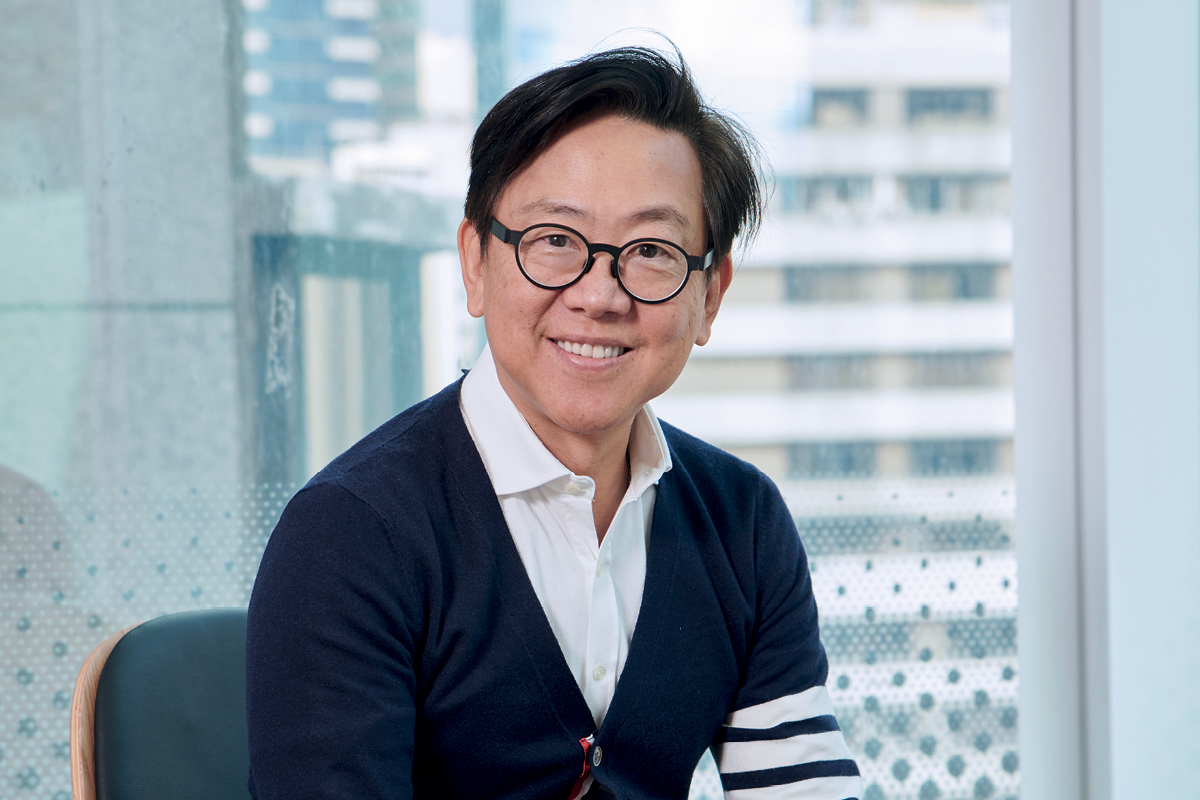“We come up with fresh ideas.”: William Lim
CL3 Architects Founder and Managing Director William Lim draws on Asian influences to design contemporary structures that transcend cultures.
Architectural firm CL3 Architects’ forte is its blend of architecture and interior design. "Many design firms in Hong Kong are either architectural-focused or interior-focused," explains its Founder and Managing Director, William Lim.

"We offer a unique combination of the two, and we master both. We approach our design based on spatial studies. We approach it like an architectural project and do a lot of manipulation of the structure and the mechanical or electrical systems."
The firm also boasts a unique branding and urbanistic point of view. "When we start many of our projects, we work with our client on the position of the project, the branding and the particular clientele or tenant that we’re targeting," William says. "We want to approach every project from a unique point of view."
The company doesn’t have a marketing team, so many of its projects have been based on repeat clients and word of mouth. "What we focus on is the deliverables and the quality of our projects," William states.
"Many of our projects win design awards. We believe that the best way to grow our business is through client satisfaction. Over the years, we have had numerous repeat clients. From these clients, some of the projects have gone from small to large. That’s what we feel is our strength: cultivating good clients and producing award-winning design projects. It’s what has kept us going all these years."
"That’s what we feel our strength is: cultivating good clients and producing award-winning design projects."
Asian inspiration
Before founding CL3 Architects in 1992, William was educated and trained in the United States. Despite his time spent overseas, Chinese architecture maintained its influence in his work.
He based his graduate thesis on it, and the firm draws much of its inspiration on Chinese and other Asian cultures. "Around 15 years ago, we were working on several restaurant projects for our hotel clients," William recalls.

"These projects were around Asian cuisine or ethnic-based. Then much of our research was based on local cultures, like Japanese culture or Thai culture. As a result, many of the projects reflect these cultures. Now that we’re doing a lot of work in mainland China, many of those projects are based on contemporary Chinese aesthetics, and that’s an area that we feel very strongly about."
The team doesn’t copy a distinctly Asian look but instead concentrates on the essence of Asian aesthetics. "We also look at the Asian ways of living – their practices and habits – and that’s how we develop our designs," William explains. "Essentially, when we come to residential projects or hotel projects, much of it must be based on an Asian aesthetic and an Asian way of living and enjoying space."
The firm’s unique projects have been well received by the public and many have won awards. For example, the Banyan Tree resort in Anji, outside of Hangzhou, China, won The American Institute of Architects Hong Kong Chapter 2018 Merit for Interior.
"We just finished a Hyatt Regency in Beijing that has powerful Asian aesthetics," William says. "These projects have been well received and we have many more projects in the works that are also based on a contemporary Chinese aesthetic."
To stay inspired in innovative and creative roles, the architectural team draws on a wealth of experience from each other and the project team. "We have about 40 designers in Hong Kong," William says.
"Much of the time, we stay resourceful through discussion, looking at various sources of inspiration, and we come up with fresh ideas. We regularly have project meetings, will have discussions among our team and hopefully come to an inspiring design."
An environment where people can share openly is an essential part of William’s business. He respects everyone’s capability and allows his team to pitch in with their creative designs. "We have a team structure of directors, senior designers and designers, and we work together to inspire each other," he says.
"Everyone gets to contribute their experience and knowledge. Some younger staff might have the more technical knowledge and older staff have more experience in general," he continues. "We like to pool everyone’s expertise and let everyone be involved. I think that’s an important principle, especially in a creative firm. We want to have everyone feel like they’re contributing and are part of the team."
"Everyone gets to contribute their experience and knowledge."
In the works
The Greater Bay Area in China is an initiative from the Chinese government to boost its economy and develop a link between Hong Kong, Macao and nine other southern Chinese cities. As a design and architecture company, CL3 Architects is doing a lot of work in this area.
"For the industry and our firm, this is an important development," William says. "We will heavily focus on this in the future." The firm has a steady flow of work and has several significant projects that will be completed in the next 12 months. Raffles City Chongqing, for example, is a landmark project that has been in the works for seven years.
"It will be a similar project to Marina Bay Sands in Singapore except on a much bigger scale. And I hope that it will become a new destination of luxury hotels in China."
Proudly supported by: